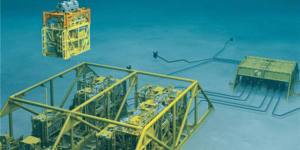
The Scope
With increasing numbers of flexible jumpers reaching the end of their design lives, the degradation analysis of flexible jumpers is an emerging area of interest for the oil and gas industry.
We were asked to perform a lifetime extension assessment of a pipeline system containing a series of flexible jumpers in a North Sea field.
The Solution
We carried out a lifetime extension assessment of the pipeline system using the approach laid out in NORSOK ISO/TS 12747 and Y-002. For the flexible jumpers, we were able to assess the degradation mechanisms of the carcass, PVDF liner and flexible wires to determine if life extension of the flexible jumpers was possible. This included:
- An examination of the likelihood of increased plasticity, ageing, embrittlement and creep of the PVDF
- An assessment of the likelihood of collapse of the carcass in the gas lift when the main flow volume is depressurised
- An assessment of the potential for carbon steel wire failure due to fatigue from cycling or corrosion if seawater or injection water is able to leak into the annulus
In addition, an assessment of the remaining anode life was carried out to ensure suitable cathodic protection for the carbon steel components and a visual inspection of the coating to ensure no damage had occurred.
We conducted a full risk assessment to analyse the likelihood of failure of the flexible jumpers as per the failure mechanisms in the American Petroleum Institute (API) recommended practice 17B.
The Benefits
We demonstrated the life extension of the pipeline system and provided the operator with confidence that they could be safely operated provided they followed the recommendations of the report and a specific subsea investigation procedure.
We continue to work alongside the operator in order to update and review the remnant life of the flexibles as per the recommended implemented integrity management processes.


.png)
.png)
.png)
.png)